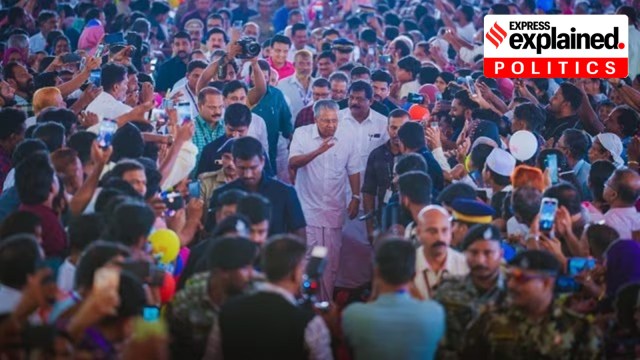Kerala alleges that the fiscal policies of the BJP -led government at the Centre are financially stifling the state. Chief Minister Pinarayi Vijayan, his cabinet colleagues, LDF MPs and legislators are likely to take part in this agitation.

Here is a look at the issues.
‘Due share in taxes denied’
Kerala claims the Centre has made a curtailment of Rs 57,400 crore in the State Receipts in the current fiscal, and it is not getting its due share from the tax collected by the Centre.
Quoting an RBI report on state finances, the Kerala government says that as per the statistics of 2021-23, on the national average, the Centre is to provide Rs 35 for every Rs 65 collected by the states. But the Centre provides only Rs 21 against Kerala’s own tax collection of every Rs 79. That is, only Rs 21 out of Rs 100 is the Centre’s contribution. Uttar Pradesh gets Rs 46 out of Rs 100 from the Centre. Bihar gets Rs 70 out of Rs 100.
Compensation for cessation of GST
Kerala says the state was deprived of a major source of revenue, Rs 12,000 crore this year, because of the cessation of Goods and Services Tax (GST) compensation from June 2022.
After the GST was introduced in 2017 and multiple taxes were brought under it, the Centre had said a compensation amount would be extended to states up to five years to make up for the shortfall in their revenue collection. The Centre had promised to ensure an annual tax growth rate of 14 per cent under GST as part of resolving the loss of tax entitlements due to GST. However, due to shortcomings in the implementation of the GST system, natural calamities and Covid, this growth rate has not yet materialised. The proposed GST compensation was terminated after five years, and Kerala wants the period extended.
Fall in allotment to Kerala from divisible pool of tax
Story continues below this ad
In the divisible pool of tax collected by the Centre, which is to be devolved among the states, 3.87% was Kerala’s share during the 10th Finance Commission period. This has come down to 2.5% in the 14th Finance Commission and to 1.925% in the 15th Finance Commission, causing a heavy fall in the state’s revenue.
The Finance Commission, in its scheme for deciding the share of taxes for states, sets various parameters and looks at all of the states’ performances in that regard. This includes the state’s total area, population, forest cover and its efforts at population control. But Kerala states that its effective birth control measures have actually contributed to the fall in the allocation of central tax. The state wants the Centre to consider second generation development problems, lifestyle diseases, and the growing proportion of elderly in the population.
Scheme for Special Assistance for Capital Expenditure
The Centre provides Special Capital Assistance to states in the form of a 50-year interest free loan. However, Kerala feels that its guidelines are not practical.
Story continues below this ad
Kerala had submitted proposals for financial assistance under the scheme, but it did not comply with some norms, particularly branding/naming of five central-sponsored projects in Kerala. They are Swachh Bharat Mission (Gramin), Ayushman Bharat Health & Wellness Centres, Pradhan Manthri Awas Yojana (Urban), Poshan Abhiyan and National Health Mission. Kerala is against co-branding of these projects as the state is contributing 40 per cent of the share in majority of these schemes. This results in the delayed transfer of both Capex and Central Share of Centrally Sponsored Schemes.
Despite taking up the matter at various levels, over Rs 600 crore under the National Health Mission and Rs 2,500 crore under Special Assistance for Capex have not been released so far
Cut in state’s borrowing limit
The net borrowing ceiling of a state (the amount that it can borrow) for each financial year is determined by the Union Finance Ministry. As per the Centre’s guidelines, Kerala’s eligible borrowing limit is Rs 39,626 crore. The State Budget was prepared considering the same. But Kerala has been allowed to borrow only Rs 28,830 crore till now. The borrowing limit was cut short mid-fiscal without any prior notice, based on improper calculation of public account balance, the state claims.
Inclusion of off-budget borrowings as state loan
Kerala has undertaken off-budget borrowings mainly for the Kerala Infrastructure Investment Fund Board (KIIFB) and Kerala Social Security Pension Limited (KSSPL). While KIIFB was floated in 2016 to mobilise funds for the state’s infrastructure projects, KSSPL, launched in 2018, was meant to do so for social security welfare pensions.
Story continues below this ad
In 2017, the Union Finance Ministry stipulated that all such borrowings of state government entities will also be taken into consideration while setting the state’s borrowing limits. In short, the Union Finance Minister considers the off-budget borrowings, mainly of KIIFB and KSSPL, as the borrowings made by the state government itself.
Thus, the Kerala budget has to make provisions for repaying the borrowings by KIIFB and KSSPL. The inclusion of such off-budget borrowings as the state’s own borrowing has, therefore, brought down its net borrowing ceiling.








































